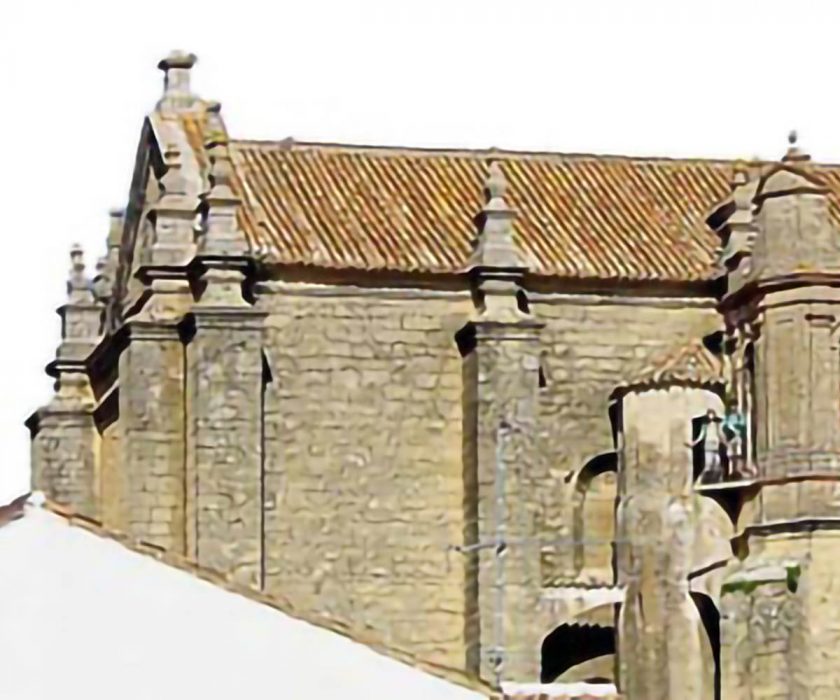Ronda was conquered, after dozens of attempts over the centuries, by King Ferdinand the Catholic, using an artillery deployment never seen before.
Alonso Yánez Fajardo was the first to scale its walls through the Almocábar gate, waving the banner of the Christians, precisely in the place that topped the Main Mosque. It was May 22, 1485, Pentecost Passover.
Once the city was definitively conquered, great celebrations and functions were organized, the royal procession visited the most emblematic places. In procession it reached the Main Mosque, which King Fernando wanted to be blessed with the dedication of Sancti Spíritus, in commemoration of the date of the conquest, endowing from then on a procession just like every year would leave the Greater Church even this one with the square banner that he gave to the city for this purpose, a distinctive that honors the city of Ronda, since the use of the Square Banner, according to the Laws of Partidas, could only be used by kings and emperors. Remaining Ronda with this donation symbolized as the Lordship of His Royal Highness.
It took twenty years to build this Church of the Holy Spirit, in 1505, the year of the death of Queen Elizabeth. Due to its sobriety and its austere construction, it is easy to see that it was built in times of war. Its sober façade is framed by two vigorous stirrups that embrace it from top to bottom, being crowned by a triangular pediment with a porthole in its tympanum as the only ornamental motif. In the same way, it has a twin stained glass window and under it, a niche that houses a dove that represents the Holy Spirit. The bell tower was built later, as were its enlarged door and the comfortable access staircase. Without a doubt, its appearance is that of an authentic fortress church. It consists of a single nave with a large pulpit, typical of the time, so that the preacher could be easily seen and heard. It has three vaults of sexual nerves. Before reaching the main arch, on both sides, there are two chapels, covered with star-shaped ribbed vaults, that of the Virgin of Fátima and that of the Sacred Heart. It is worth highlighting, in one of its side chapels, the sculptural representation of the Holy Burial, with an extraordinary urn and a magnificent image of the recumbent Christ that is processed on Good Friday at dusk. The presbytery area is covered by an eight-rib vault that rides on semicircular arches. The appearance of the pecunias assembled together by an original rib is curious.
The ship is 30 m. long by 9 wide. On the roof it has three coffered ceilings and a gothic style half orange, supported by stone arches linked with showy frets; the arch of the half orange leaning on two simple columns embedded in the end walls and the three coffered ceilings in the center of the walls. It is of great simplicity and its style resembles Elizabethan Gothic, concealed by some modifications made later. A main Baroque altar covers the central apse with a painting, in its upper part, of the coming of the Holy Spirit and, in the center, a painting on wood of the Virgen de la Antigua, in beautiful Byzantine style. The entire front is occupied by this beautiful and well-finished Rococo altarpiece, with two projecting columns, all of it nuanced with a multitude of bouquets, plates, engravings and half-reeds that make it extremely beautiful.
Carved in stone on the main altar, three shields; the largest, in the center, has the Imperial Eagle of the House of Austria.
The exterior has an air of great solidity, due to its origin as a fortified tower in the wall, with large buttresses topped with Renaissance pinnacles. The entire building is admirable for its special structure in which no wood was used. At the end of his works, in 1505, D. Diego Ramírez de Haro was Bishop of Malaga. But it is believed that it was not raised to the category of Parish until the last years of the episcopate of D. César Riario, since his first book of Baptisms begins in 1534.
However, this church was considered for many years as the largest and almost the only one in Ronda, since it is known that during the long time it took to conclude Santa María, all the canonical hours prevented by the creation of the body of beneficiaries and in it all the religious acts that corresponded to the Major took place.
This temple also reached by means of special Bulls, prayers and own indulgences, being, among others, one of Pope Urban VIII, granting plenary indulgence in the Jubilee of 40 hours, the day of Saint Mary Magdalene. Given in Rome on August 15, 1639.
His Parish Book of Marriages begins in 1570 and that of Deaths in 1674.
As notable paintings on its walls it has a San Pedro, by Rivera, and a Santa Cena de Jesús, with his Apostles, which belonged to the destroyed convent of the Trinidad. It is undoubtedly one of the most notable and best-preserved buildings in our city, now five hundred years old.

